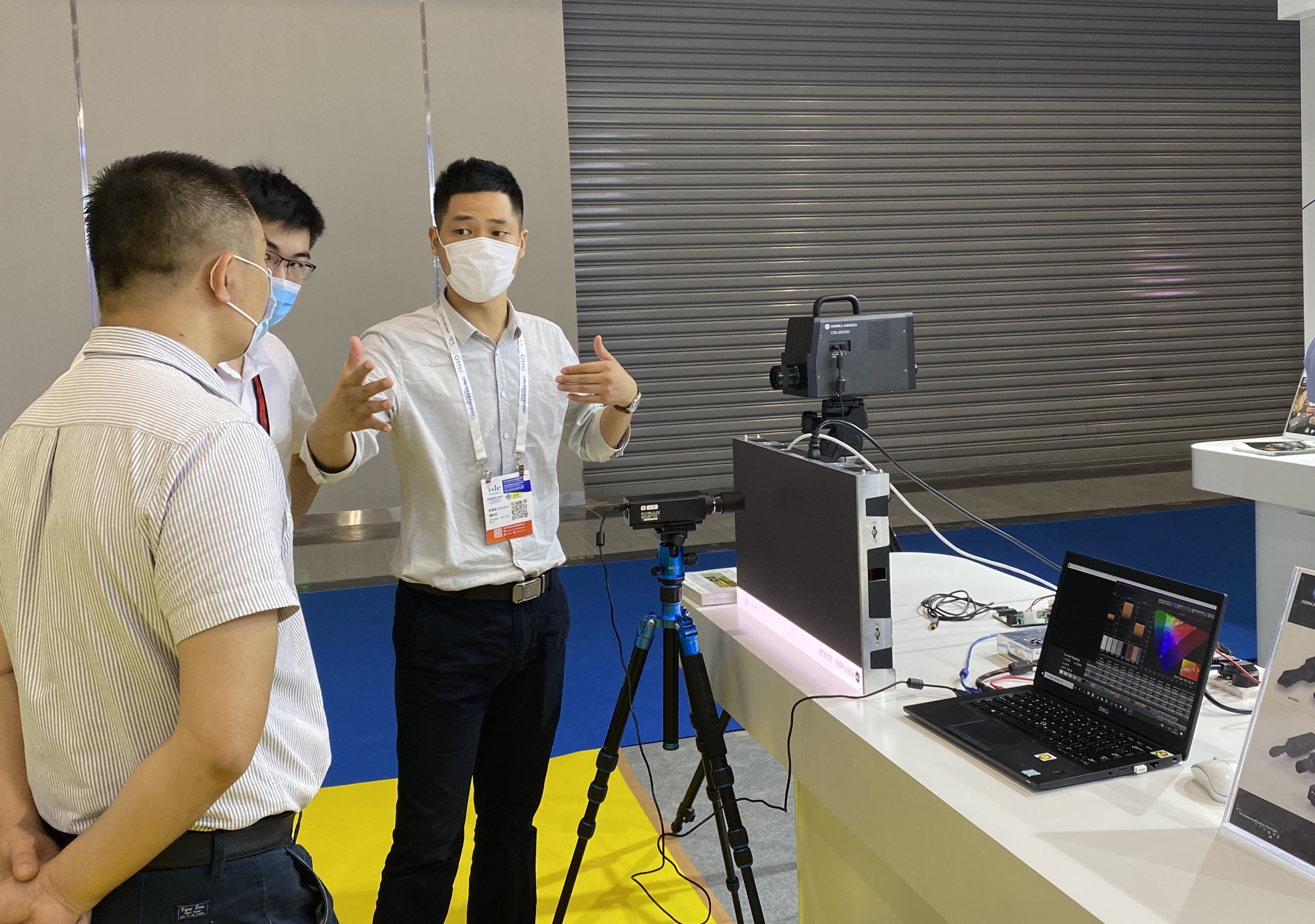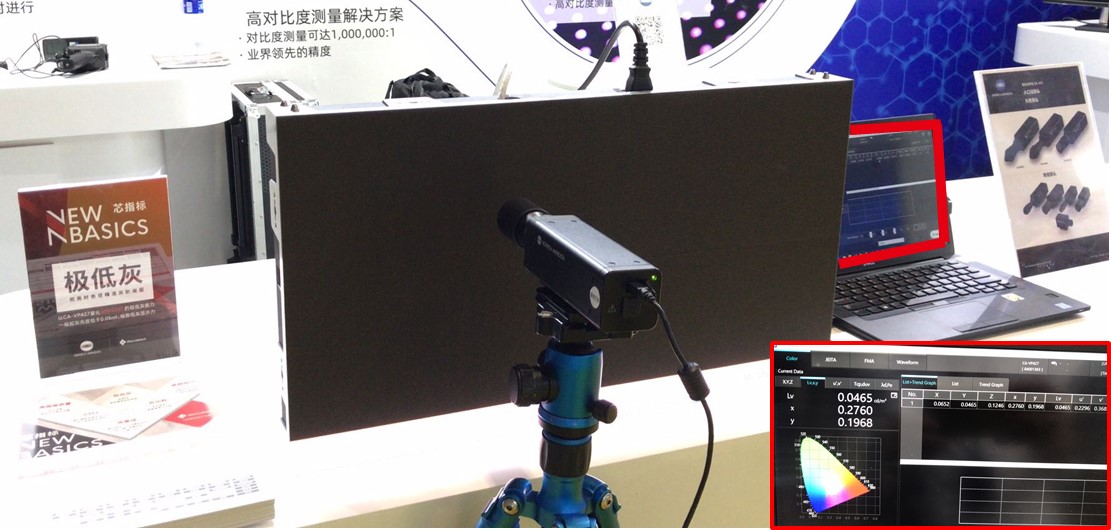CLOSE
Search for “” keywords, total search results
CLOSE
Search for “” keywords, total search results
2020.August


ISLE 2020, the iconic LED display exhibition of the year, kicks off today in Shenzhen, China and one can see each and every exhibitor shows-off its latest and most outstanding products during the exhibition. In this year, we are delighted to see the collaboration between Macroblock and Konica Minolta to demonstrate the new concept of “quantified visual performance”.
Konica Minolta, the optical industry leader, has been expanding its business in various areas from digital cameras to printing services to medical products. Konica Minolta’s optical instruments are also widely used by the LED display insiders for product performance evaluation. In the ISLE 2020, Macroblock uses Konica Minolta’s CA-VP427 to measure the low grayscale performance of an LED display that is embedded with MBI5264 with the aim of explaining the abstract concept of “Minimum Gray” using quantitative data and visual effects.
Figure 1, Staff are explaining the new concept of “quantified visual performance” to visitors
The "Minimum Gray" concept is one of the elements of the "New Basics", which was introduced by Macroblock earlier this year to provide an industry guidance for display performance evaluation. It can be defined as the low grayscale visual performance of an LED display. When an LED display is said to have the element of "Minimum Gray", it means that the display is capable of rendering accurate gradient images at low brightness level. In other words, the element of "Minimum Gray" does not only focus on the brightness of grayscale level 1 of a given display, but also on the display’s ability to render acceptable visual quality when there is low brightness constraint. As any LED insider would know, rendering acceptable visual effects at low grayscale has always been the pain point faced by the LED display industry players. Users often need to sacrifice grayscale values at low brightness level for better image quality. This inevitably leads to the need of setting a higher brightness at grayscale level 1 and results in low contrast and image details loss.
Figure 2, Live demonstration of “Minimum Gray” concept
Building upon the legacy of 32-scan driver IC foundation and following the 8K resolution display trend, Macroblock launches a series of 64-scan driver ICs, including MBI5264, to meet the market requirement of shrinking pixel pitch. “This time, we choose the LED display embedded with MBI5264 to demonstrate the ‘Minimum Gray’ concept because MBI5264 has the ‘PWM Enhancement’ function that can increase grayscale clock frequency to achieve 16-bit grayscale and 4KHz refresh rate visual performance of a high-scan design,” explains the Macroblock General Manager, Mr. Robert Chen. At Konica Minolta’s booth, visitors are asked to measure the LED display embedded with MBI5264 using CA-VP427. Within seconds, they see the visual performance result from the laptop screen (picture 2), which shows that even when the lowest brightness level is set to be under 0.05 nit, the contrast level is still over 10,000. Through this test, it is clear that Macroblock’s solution perfectly retains good image quality at low brightness level. To explain further, MBI5264 is able to resolve high contrast interference problems effectively as it is designed with “Novel Low Grayscale Processing Circuit”. Consequently, users no longer need to sacrifice low grayscale values because of image defects and are able to enjoy high-end display performance.
Figure 3, Macroblock’s solution demonstrates the superior linear-gradient performance
In summary, low grayscale performance is essential for LED displays to bring about high contrast and sophisticated image details. Furthermore, when visual performance can be quantified by scientific instruments, instead of just by human eyes, users will be able to better appreciate the true value of a product and the technology embedded within. This will translate into a positive force that will encourage the LED display industry players to strive for greater heights and delivering higher-end products to customers consistently.